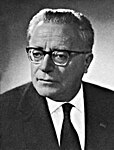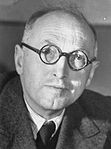Italian general election, 1958
|
|
|||||||||||||||||||||||||||||||||||||||||||||||||
|---|---|---|---|---|---|---|---|---|---|---|---|---|---|---|---|---|---|---|---|---|---|---|---|---|---|---|---|---|---|---|---|---|---|---|---|---|---|---|---|---|---|---|---|---|---|---|---|---|---|
|
|||||||||||||||||||||||||||||||||||||||||||||||||
|
All 596 seats to the Italian Chamber of Deputies and 246 (of the 253) seats to the Italian Senate |
|||||||||||||||||||||||||||||||||||||||||||||||||
| Turnout | 93.8% | ||||||||||||||||||||||||||||||||||||||||||||||||
|
|||||||||||||||||||||||||||||||||||||||||||||||||
 
Legislative election results map. Light Blue denotes provinces with a Christian Democratic plurality, Red denotes those with a Communist plurality, Gray denotes those with an Autonomist plurality.
|
|||||||||||||||||||||||||||||||||||||||||||||||||
|
|||||||||||||||||||||||||||||||||||||||||||||||||
Amintore Fanfani
Christian Democracy
General elections were held in Italy on Sunday May 25, 1958, to select the Third Republican Parliament. The number of MPs to be elected was calculated upon the population's size for the last time.
Minor changes were made to the electoral law in 1958, creating a system which would remain unchanged until its abrogation in 1993.
The pure party-list proportional representation was definitely adopted for the Chamber of Deputies. Italian provinces were united in 32 constituencies, each electing a group of candidates. At constituency level, seats were divided between open lists using the largest remainder method with Imperiali quota. Remaining votes and seats were transferred at national level, where they were divided using the Hare quota, and automatically distributed to best losers into the local lists.
For the Senate, 237 single-seat constituencies were established, even if the assembly had 9 more members. The candidates needed a landslide victory of two thirds of votes to be elected: only 5 hoping senators reached this goal. All remained votes and seats were grouped in party lists and regional constituencies, where a D'Hondt method was used: inside the lists, candidates with the best percentages were elected.
After De Gasperi's retirement in 1953 Fanfani emerged as the anticipated successor, a role confirmed by his appointment as party secretary from 1954-1959. He reorganized and rejuvenated the national party organization of the Christian Democrats after the dependence on the church and the government which had typified the De Gasperi period.
However, his activist and sometimes authoritarian style, as well as his reputation as an economic reformer, ensured that the moderates within the DC, who opposed the state’s intrusion into the country’s economic life, regarded him with distrust. His indefatigable energy and his passion for efficiency carried him far in politics, but he was rarely able to exploit fully the opportunities that he created. "Fanfani has colleagues, associates, acquaintances and subordinates," one politician once remarked. "But I have never heard much about his friends."
...
Wikipedia



